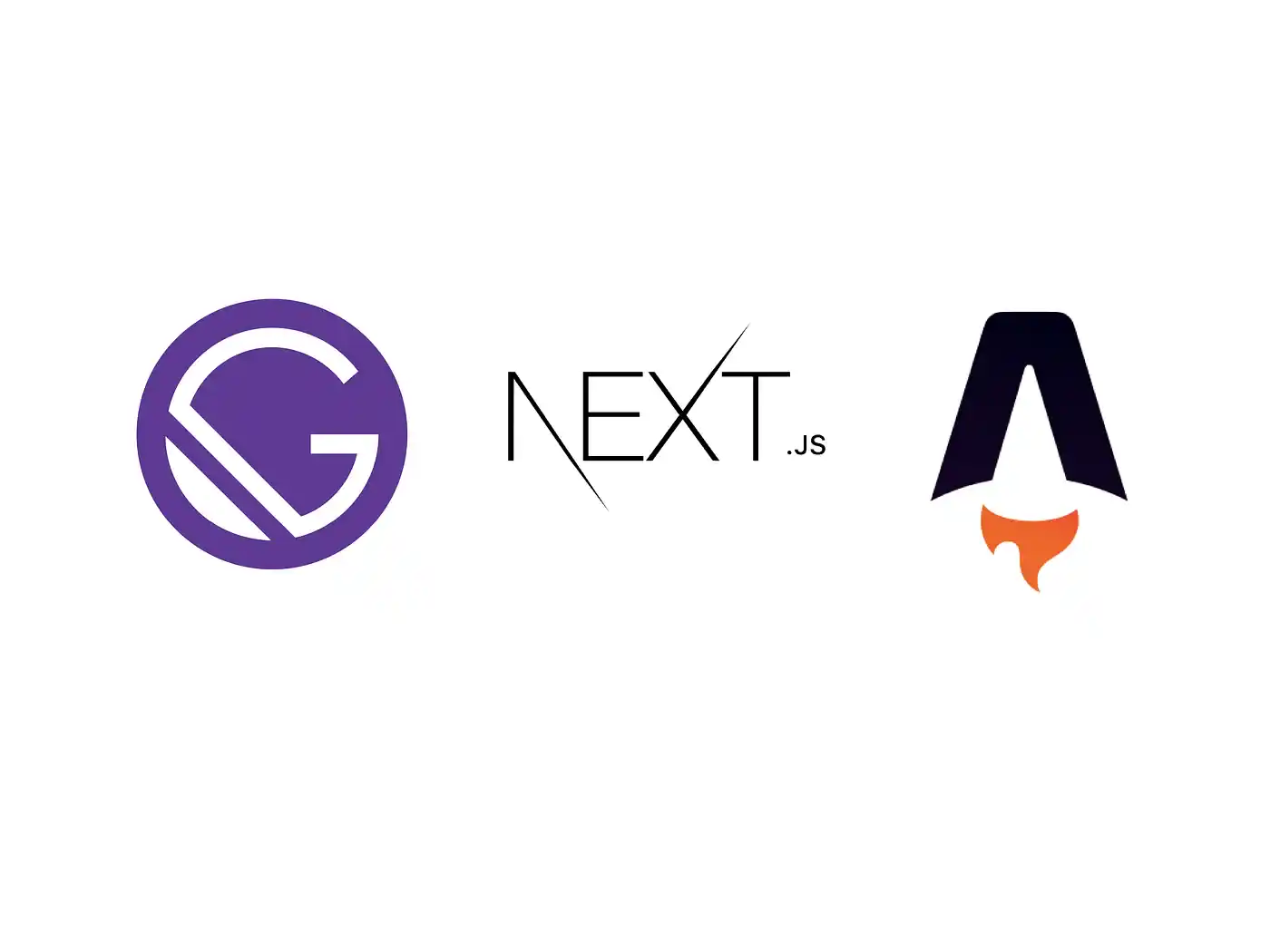Table of Contents
In the ever-evolving world of web development, choosing the right static site generator (SSG) is crucial for optimizing performance, developer experience, and project scalability. Among the most popular options today are Astro.js, Gatsby, and Next.js.
Each of these static site generators brings unique features to the table, catering to different project needs. In this blog, we’ll compare Astro.js, Gatsby, and Next.js, exploring their strengths, ideal use cases, and why you might choose one over the other.
What is a Static Site Generator?
A static site generator (SSG) is a tool that compiles your website into static HTML, CSS, and JavaScript files that can be served directly to the client. Unlike dynamic sites that rely on server-side rendering (SSR), static sites are pre-built and don’t require a web server to generate content on the fly.
This approach offers significant advantages, including faster load times, enhanced security, and easier deployment. The right SSG can streamline your development process and improve performance, so it’s essential to choose one that aligns with your project goals.
Comparing Astro.js, Gatsby, and Next.js
To help you decide, here’s a side-by-side comparison of Astro.js, Gatsby, and Next.js:
| Feature | Astro.js | Gatsby | Next.js |
|---|---|---|---|
| Performance | Zero JavaScript by default; partial hydration for interactivity | Heavy reliance on GraphQL and React; can be slower for large sites | Great for dynamic apps but heavier JavaScript compared to Astro |
| Developer Experience | Simple, intuitive, and supports multiple frameworks | Steep learning curve with GraphQL | Flexible but requires more configuration for static sites |
| Use Cases | Content-heavy sites, blogs, docs | React-based apps with plugins | Hybrid apps needing SSR and static content |
| Community | Growing rapidly | Mature with extensive plugins | Backed by Vercel with a large community |
| Scalability | Excellent for small to large projects | Good for medium to large projects | Scales well for complex, dynamic sites |

Why Choose Astro.js?
Astro.js has rapidly gained popularity in the static site generator space thanks to its focus on performance and simplicity. Some standout benefits include:
Optimized Performance
Astro.js takes a minimalist approach to JavaScript. By default, it serves no JavaScript to the browser, resulting in faster load times. This is ideal for content-heavy websites like blogs, portfolios, and documentation sites that don’t require complex interactivity. Additionally, Astro.js supports partial hydration, meaning only interactive components on a page (like forms or buttons) load JavaScript, keeping the rest of the page lightweight.
Multi-Framework Support
Unlike other static site generators that are tied to a single JavaScript framework, Astro.js supports multiple frameworks, including React, Vue, Svelte, and others. This flexibility is great for teams working with different technologies or for developers who want to experiment with different frameworks on the same site.
Ease of Use
Astro.js is known for its intuitive setup and user-friendly tools. Getting started is straightforward, making it an excellent choice for developers who want to create fast websites without diving into complex configuration.
Why Choose Gatsby?
Gatsby is a powerful static site generator primarily geared towards React developers. Here are some reasons to choose Gatsby:
Rich Plugin Ecosystem
Gatsby has a vast library of plugins, which make it easy to add additional functionality to your website. Whether you need to integrate with a CMS, optimize images, or implement SEO features, there’s likely a plugin for it. This extensibility is one of Gatsby’s strongest features.
GraphQL Integration:
Gatsby uses GraphQL for data fetching, allowing developers to query and assemble data from a variety of sources in a flexible way. This makes Gatsby a great choice for building content-rich sites, such as blogs and e-commerce sites, where data needs to be pulled from multiple sources and dynamically rendered.
PWA Features
Gatsby comes with out-of-the-box support for Progressive Web App (PWA) features, allowing developers to create fast, offline-first websites with minimal configuration.
Why Choose Next.js?
Next.js is a full-stack framework that offers static site generation (SSG) along with server-side rendering (SSR) capabilities, making it an ideal choice for hybrid applications. Here’s why you might choose Next.js:
Hybrid Capabilities
One of Next.js’s strongest features is its ability to combine both SSR and SSG in the same project. This flexibility allows you to have parts of your site pre-rendered at build time while others are generated on the server when requested by the user. This makes Next.js an excellent option for projects that require both static pages and dynamic content, such as e-commerce sites or complex web apps.
Dynamic Routing
Next.js handles dynamic routing seamlessly, allowing developers to easily create pages with dynamic URLs without complex configurations. This is particularly useful for projects that require user-generated content or personalized pages.
Vercel Integration
Next.js is tightly integrated with Vercel, the company behind its development. Vercel offers a fast, reliable deployment platform, and Next.js is optimized for deployment there. This tight integration reduces the friction between development and production, ensuring smooth deployments and rapid performance.
Getting Started with Astro.js
1. Create a new Astro project:
npm create astro@latest my-astro-project
cd my-astro-project
npm install 2. Add a page: Inside the src/pages directory, create a new file index.astro:
---
title: "Welcome to Astro"
---
<h1>{title}</h1>
<p>Build faster websites with less effort!</p>3. Run the development server:
npm run dev4. Deploy: You can deploy your Astro site using platforms like Vercel or Netlify.
Conclusion
Astro.js, Gatsby, and Next.js each shine in different scenarios. Astro.js is perfect for performance-focused, content-heavy sites, offering simplicity and flexibility with minimal JavaScript. Gatsby is an excellent choice for React developers looking for a rich plugin ecosystem and advanced data-fetching capabilities through GraphQL.
Next.js, with its hybrid capabilities, is the go-to solution for complex applications that need both static and dynamic content, especially if you’re leveraging server-side rendering.
Ultimately, the right choice depends on your project’s specific needs. Whether you’re focused on speed, flexibility, or a feature-rich ecosystem, one of these three static site generators will help you build a faster, more efficient web experience.